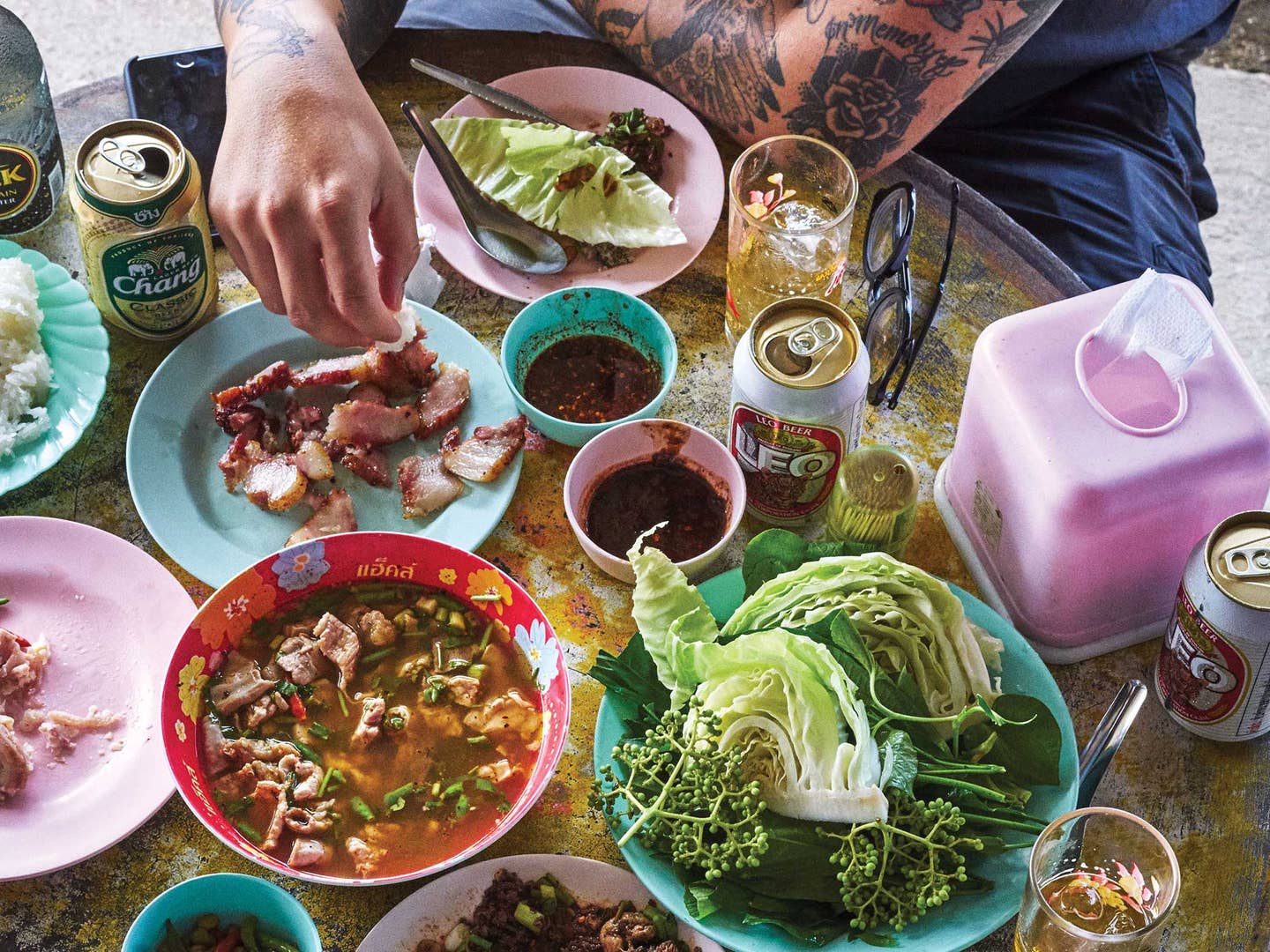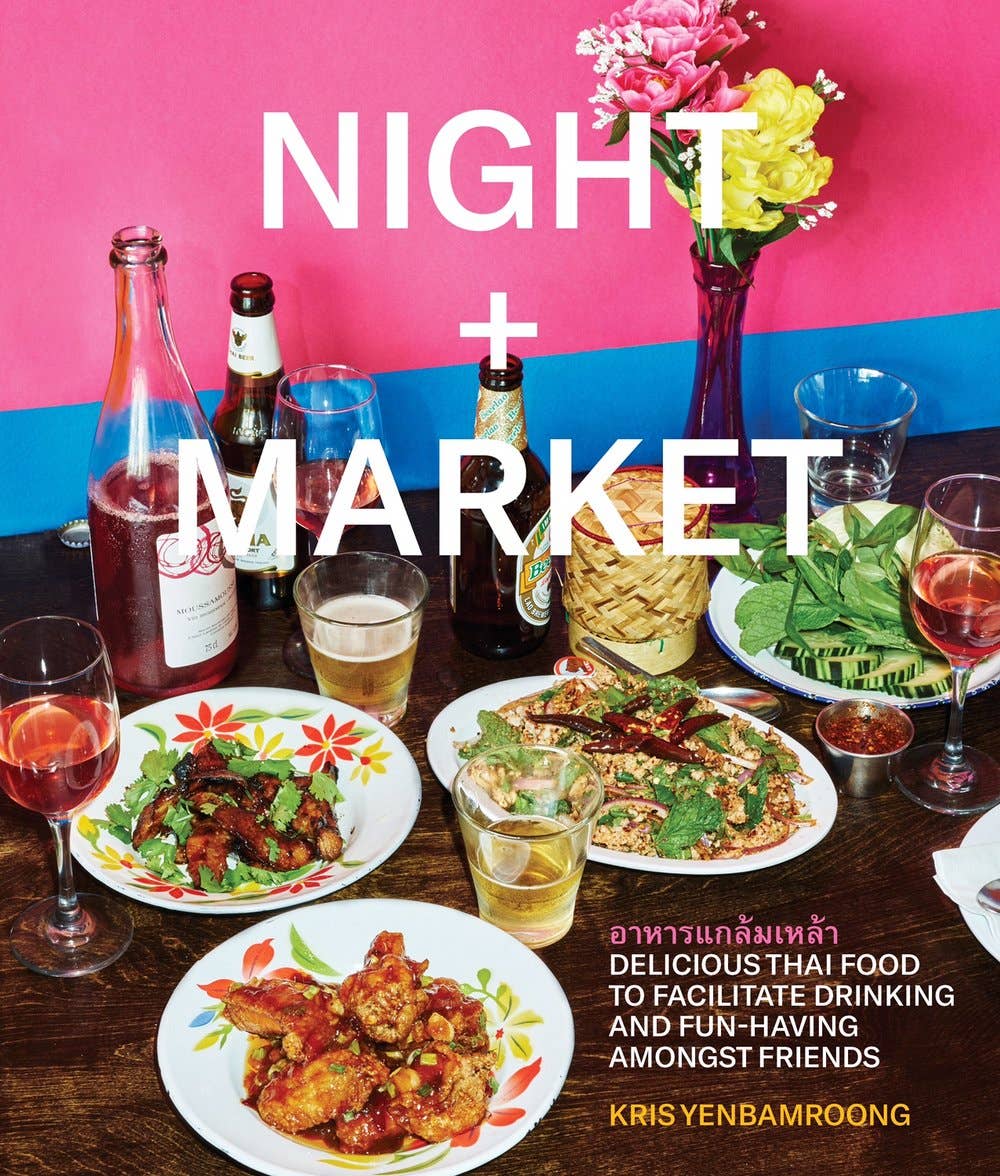Thai Blood Soup and the Authenticity Trap
“Adventurous foodie types saw the dish as a challenge, but the truth was something more complicated”

The following is an excerpt from the essay "Drunkards, Gamblers, and Blood Soup" in Night + Market: Delicious Thai Food to Facilitate Drinking and Fun-Having Amongst Friends by Kris Yenbamroong and Garret Snyder. See more of our favorite fall cookbooks here.
To a certain subset of people, Night + Market will forever be known as "that Thai place that serves blood soup." And I have to admit, when I first put it on the menu, I knew it was going to be one of those things that polarized people.
Luu is a dish found in parts of Northern Thailand. Even up there, it's pretty niche—a majority of Thai people don't really eat it (you can die from eating raw blood, and a few of my countrymen do each year as a result of enjoying this delicacy). The main component is fresh liquid blood, which is then seasoned with what I think of as an all-purpose "Northern Thai spice trifecta" consisting of makwaen, malaep, and deeplee (three types of peppercorns, basically). You massage the blood with lemongrass leaves to "purify" it, add a pinch of salt and MSG, then top it with some rough chopped raw herbs, crispy noodles, and pork skin cracklings. Our version cuts back on the blood, and instead of having the herbs and noodles on the side, they're piled on top.
When we opened Night + Market Song, I obviously couldn't serve raw blood. So I had to dream up a way to create the same sensation you get when you're eating raw blood, only with cooked blood. When you serve something cooked, in Thai you call it "suk," thus it became luu suk. It was a workaround; something that didn't exist in Thailand.
To me, the heart of the experience revolved around that awesome spice mix, which tastes and smells uniquely of Northern Thailand like the way gingerbread smells like Christmas. Luu, for me, is a way to experience the act of dipping and sharing the same plate of food among friends. It was never a gross-out item or an exoticism thing. On a good night we would sell maybe three or four, but it made me feel good to serve something that I associated with my friends and family.
The irony was that a year or two after we introduced it, this new Thai restaurant in Hollywood began serving something called “cooked blood soup with herbs” that was listed as lue sook, which of course was not an actual Thai dish but something I made up. The restaurant in question is closed now, but at the time I was more confused than offended. Why would they rip off my worst-selling dish?
When you serve something like blood soup, people will extract different meanings from it. There are those who wrongly assume because it's the most squeamish dish on the menu, it must be the most "authentic." It's that thinking that turns the perception of authentic "ethnic" food into an arms race to the bottom, as if the entire point of cooking any regional cuisine is to seek out the most outlandish and obscure dishes, like some sort of culture vulture.
The truth behind the blood soup is nuanced, and sometimes nuance can be hard to express with large groups of people. It's natural that we want food to represent something, to make a deeper comment about culture and all that, but sometimes that comment is simply Here's this unique and interesting thing I enjoyed in Thailand, I kind of messed with it, try it with alcohol.
Reprinted from Night + Market. Copyright © 2017 by Kris Yenbamroong. Photographs by Marcus Nilsson. Published by Clarkson Potter/Publishers, an imprint of Penguin Random House, LLC.
Keep Reading
Continue to Next Story











